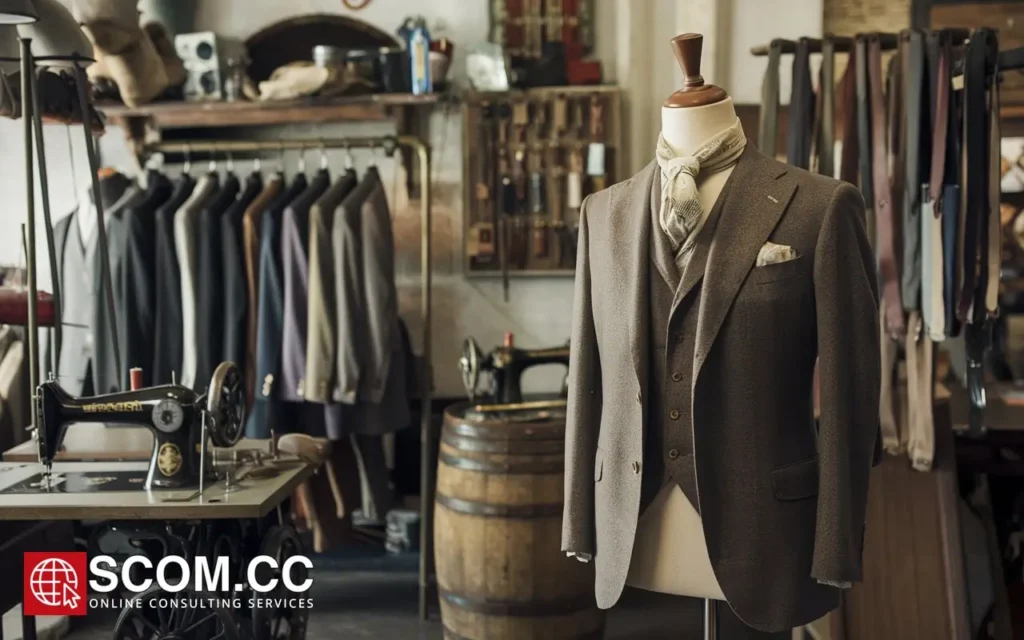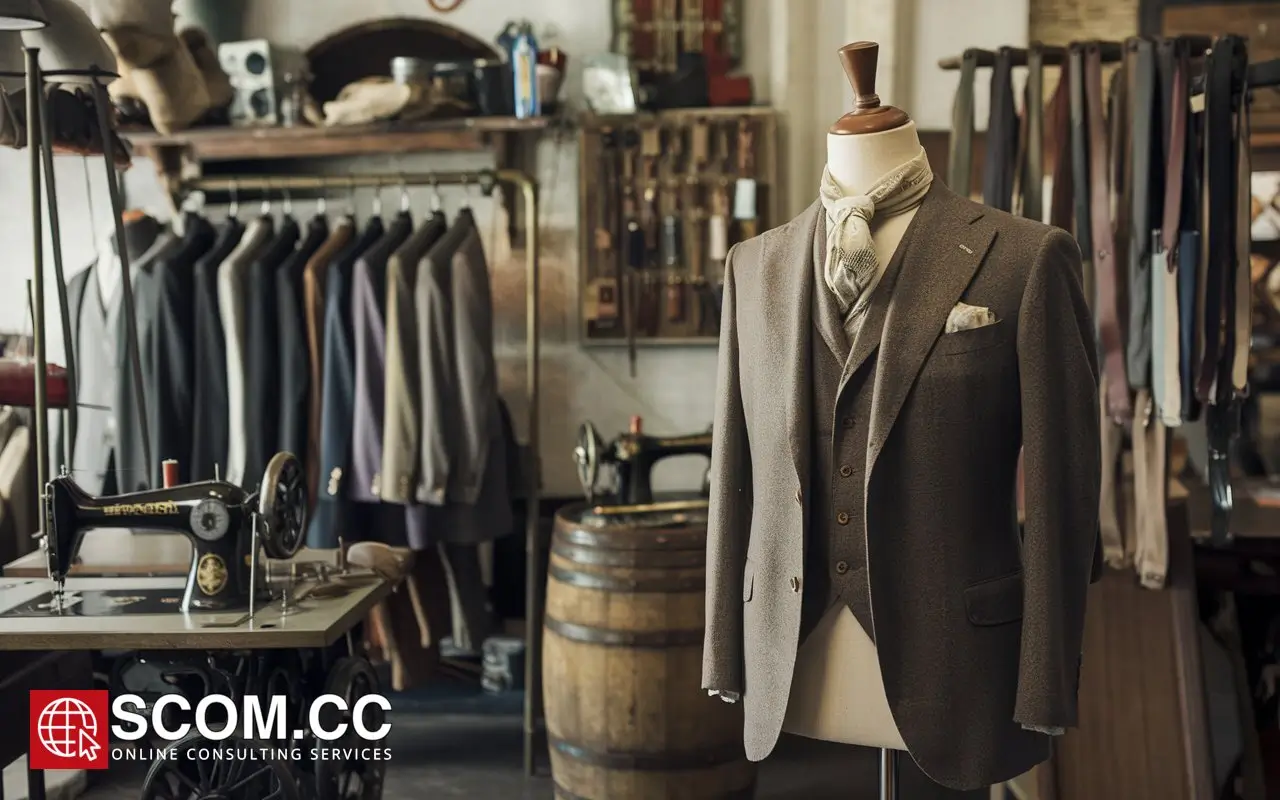How Has Historical Tailoring Influenced Modern Fashion Trends?

- How Has Historical Tailoring Influenced Modern Fashion Trends?
- Victorian Tailoring: The Birth of Structure and Form
- 20th Century Tailoring: Function Meets Fashion
- The 1960s and 1970s: Tailoring Meets Rebellion
- Contemporary Tailoring: A Fusion of Tradition and Innovation
- Conclusion
-
FAQ
- 1. How did Victorian tailoring influence modern menswear?
- 2. What role did World War I play in shaping modern fashion?
- 3. How did World War II impact the fashion industry?
- 4. What are the key influences of the 1960s Mod movement on fashion?
- 5. How have bohemian styles from the 1970s influenced modern fashion?
- 6. What are the current trends in sustainability and ethical tailoring?
- 7. How is technology influencing modern tailoring?
How Has Historical Tailoring Influenced Modern Fashion Trends?
The evolution of fashion is a continuous process, with modern trends often rooted in the rich history of tailoring. From the structured silhouettes of the Victorian era to the military-inspired designs of the 20th century, the art of tailoring has played a significant role in shaping contemporary fashion. Understanding the historical influences on today’s styles offers a deeper appreciation for the craftsmanship, functionality, and aesthetic principles that continue to drive fashion forward. In this article, we explore how historical tailoring has left an indelible mark on modern fashion trends, influencing everything from menswear to high fashion.
Victorian Tailoring: The Birth of Structure and Form
The Influence on Modern Menswear
The Victorian era is synonymous with the rise of structured and formal tailoring, particularly in menswear. During this time, the three-piece suit became a staple, with its emphasis on fitted silhouettes, padded shoulders, and tailored waists. These elements have had a lasting impact on modern menswear, with the classic suit remaining a symbol of elegance and professionalism.
Today, designers often revisit the Victorian aesthetic, incorporating elements like high collars, double-breasted jackets, and waistcoats into contemporary collections. The attention to detail and emphasis on structure that defined Victorian tailoring continue to inspire modern menswear, making it both timeless and relevant.
Women's Fashion and the Corset’s Legacy
In women's fashion, the Victorian corset was a defining garment, shaping the female silhouette with its cinched waist and structured bodice. While the modern fashion industry has largely moved away from the restrictive nature of corsets, the influence of this garment can still be seen in the emphasis on hourglass shapes and structured garments in high fashion.
Corset-inspired designs, such as boning in dresses and tops, continue to make appearances on runways, showcasing how historical tailoring techniques can be adapted for modern tastes. The legacy of the corset, though reimagined, remains a significant influence on contemporary fashion.
20th Century Tailoring: Function Meets Fashion
The Impact of Military Tailoring on Contemporary Styles
The two World Wars had a profound effect on tailoring, particularly through the military influence that seeped into civilian fashion. Trench coats, bomber jackets, and structured suits—originally designed for military use—became fashion staples that continue to dominate wardrobes today.
The trench coat, first popularized during World War I, remains a versatile and enduring piece of outerwear. Modern designers often update this classic garment with new materials and finishes, yet its basic structure—characterized by its belted waist, double-breasted front, and durable fabric—remains true to its military roots. Similarly, bomber jackets, with their cropped fit and ribbed cuffs, have become a fashion icon, regularly reinvented in various fabrics and colors.
Utility and Androgyny in Fashion
World War II further solidified the relationship between utility and fashion. Utility clothing, designed for practicality and minimal fabric use, laid the groundwork for many contemporary trends. Today, we see a resurgence of functional fashion, where practicality is paired with style. Cargo pants, oversized pockets, and multifunctional garments reflect the continued influence of wartime tailoring.
Additionally, the wartime blurring of gender roles led to a more androgynous approach to fashion. Women adopted trousers, blazers, and workwear, challenging traditional gender norms in clothing. This influence is evident in modern fashion, where gender-fluid designs and unisex collections are becoming increasingly popular. The utilitarian, androgynous styles that emerged from historical tailoring continue to resonate with today’s designers and consumers alike.
The 1960s and 1970s: Tailoring Meets Rebellion
The Mod Movement and Tailored Revolution
The 1960s Mod movement in Britain introduced a new approach to tailoring, characterized by sharp lines, bold colors, and slim fits. This era saw the rise of skinny suits, often paired with narrow ties and Chelsea boots. The Mod aesthetic was a rebellion against the conservative styles of previous decades and continues to influence contemporary fashion, especially in men’s streetwear and retro-inspired collections.
Today, the slim-fit suit—a staple of the Mod wardrobe—remains a popular choice for those seeking a sleek, modern look. Designers often incorporate Mod-inspired elements into their collections, using sharp tailoring and minimalist designs to create a sense of sophisticated rebellion.
Bohemian Influence and Relaxed Tailoring
The late 1960s and 1970s brought about a countercultural shift towards bohemian styles, where tailoring became more relaxed and fluid. Flowing garments, bell-bottom trousers, and oversized blazers reflected the era's desire for freedom and self-expression. This period challenged the rigid structures of traditional tailoring, introducing a more free-spirited approach to fashion.
Modern fashion often revisits this era, with boho-chic styles and relaxed tailoring appearing in seasonal collections. The combination of structured and relaxed elements—a hallmark of 1970s fashion—continues to influence contemporary designs, blurring the lines between formal and casual wear.
Contemporary Tailoring: A Fusion of Tradition and Innovation
Sustainability and Ethical Tailoring
In recent years, there has been a growing emphasis on sustainability and ethical practices in fashion, a trend that harkens back to the resourcefulness required during times of scarcity in the past. Modern tailors and designers are increasingly focusing on minimal waste, durable materials, and timeless designs—principles that align with the conservation-driven tailoring seen during the World Wars.
This trend has led to the resurgence of slow fashion and bespoke tailoring, where quality craftsmanship is prioritized over mass production. The emphasis on sustainable practices is a modern reinterpretation of historical tailoring, where garments were made to last, often passed down through generations.
Tech-Driven Tailoring
The fusion of historical tailoring techniques with modern technology has given rise to tech-driven tailoring. 3D body scanning, laser cutting, and AI-powered design tools allow for unprecedented precision and customization. Yet, despite these innovations, the core principles of tailoring—fit, form, and function—remain unchanged. This blend of tradition and technology is shaping the future of fashion, ensuring that the art of tailoring continues to evolve while staying true to its roots.
Conclusion
The influence of historical tailoring on modern fashion is undeniable. From the structured elegance of Victorian menswear to the functional, military-inspired designs of the 20th century, tailoring has continually adapted to reflect the changing needs and desires of society. Today’s fashion trends are a testament to the enduring legacy of tailoring, where tradition meets innovation in the pursuit of style and functionality. As we look to the future of fashion, the lessons of the past remind us that true craftsmanship is timeless.
Table of Contents
| Historical Period | Tailoring Influence | Modern Fashion Trends |
|---|---|---|
| Victorian Era | Structured silhouettes, three-piece suits, corsets | Classic suits, structured garments, corset-inspired designs |
| World War I | Material shortages, military aesthetic, utility clothing | Trench coats, military-inspired trousers, functional fashion |
| World War II | Rationing, utility clothing, military influences | Bomber jackets, utility-inspired garments, androgynous styles |
| 1960s and 1970s | Mod movement, relaxed tailoring, bohemian styles | Slim-fit suits, retro-inspired collections, relaxed tailoring |
| Contemporary Era | Sustainability, ethical practices, tech-driven tailoring | Slow fashion, bespoke tailoring, technology in design |
FAQ
1. How did Victorian tailoring influence modern menswear?
Victorian tailoring introduced the three-piece suit with a focus on structured silhouettes, padded shoulders, and tailored waists. These elements have influenced modern menswear by establishing the classic suit as a symbol of elegance and professionalism, with many contemporary designers incorporating Victorian-inspired elements into their collections.
2. What role did World War I play in shaping modern fashion?
World War I influenced modern fashion through material shortages and the introduction of utility clothing. The military aesthetic became prominent, leading to the popularity of trench coats and military-inspired trousers. This period emphasized practicality and functionality, trends that are still seen in contemporary fashion.
3. How did World War II impact the fashion industry?
World War II had a significant impact through rationing and utility clothing. The era saw the rise of military-inspired garments such as bomber jackets and pea coats. Additionally, the period's focus on practicality led to the adoption of more androgynous styles in women's fashion, a trend that continues today.
4. What are the key influences of the 1960s Mod movement on fashion?
The 1960s Mod movement introduced skinny suits, narrow ties, and Chelsea boots. This era's emphasis on sharp lines and bold colors influenced modern fashion by popularizing the slim-fit suit and retro-inspired collections, which are frequently revisited in contemporary menswear.
5. How have bohemian styles from the 1970s influenced modern fashion?
The 1970s bohemian style introduced relaxed tailoring and flowing garments. Modern fashion continues to reflect this era through boho-chic styles and relaxed tailoring, blending structured and free-spirited elements to create versatile and expressive outfits.
6. What are the current trends in sustainability and ethical tailoring?
Today’s fashion industry emphasizes sustainability and ethical practices, inspired by historical resourcefulness. Modern trends include slow fashion, where quality and durability are prioritized, and bespoke tailoring that reflects a commitment to craftsmanship and minimal waste.
7. How is technology influencing modern tailoring?
Technology has revolutionized tailoring with 3D body scanning, laser cutting, and AI-powered design tools. These innovations enhance precision and customization in fashion while preserving the core principles of traditional tailoring, ensuring that the art of tailoring evolves with modern advancements.

To explore more about tailoring, visit our Blog of Tailoring. If you have any questions or need assistance, go to our contact page. Additionally, you can find more information about tailoring and consulting at this tailoring and consulting portal.

Leave a Reply